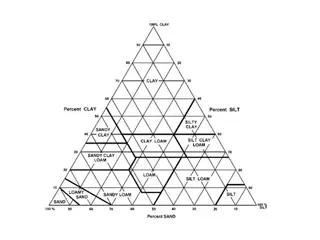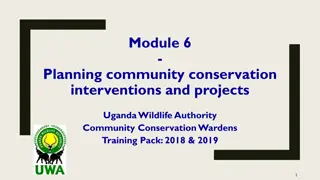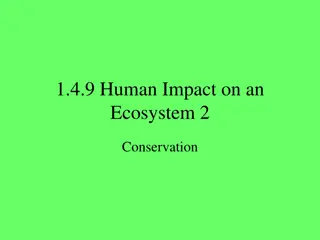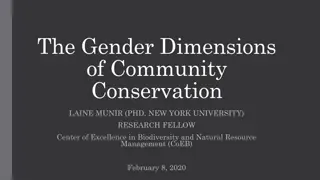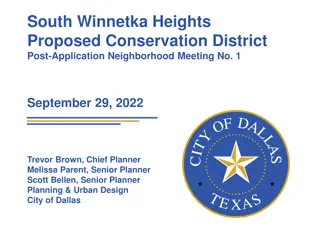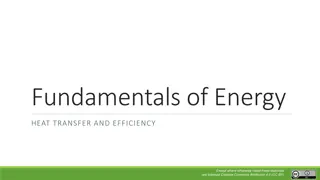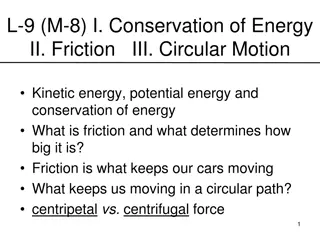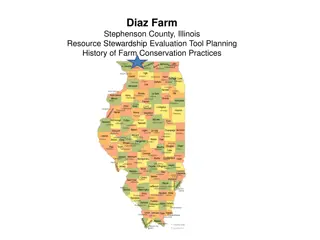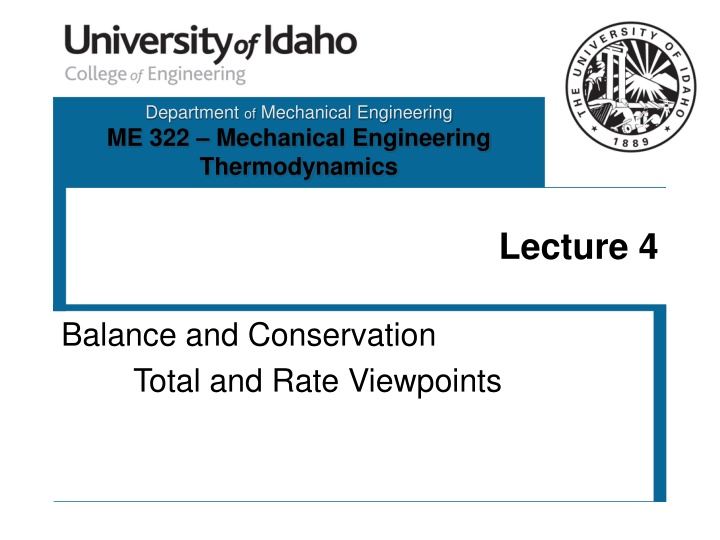
Balance and Conservation in Mechanical Engineering
Explore the fundamental concepts of balance and conservation in mechanical engineering, focusing on total and rate viewpoints. Learn how quantities are transported, produced, stored, or destroyed within a system over time, and delve into the principles of the balance and conservation equations. Discover the importance of tracking balances in both total and rate forms, and understand the conservation of mass, momentum, energy, and electrical charge in engineering applications.
Download Presentation

Please find below an Image/Link to download the presentation.
The content on the website is provided AS IS for your information and personal use only. It may not be sold, licensed, or shared on other websites without obtaining consent from the author. If you encounter any issues during the download, it is possible that the publisher has removed the file from their server.
You are allowed to download the files provided on this website for personal or commercial use, subject to the condition that they are used lawfully. All files are the property of their respective owners.
The content on the website is provided AS IS for your information and personal use only. It may not be sold, licensed, or shared on other websites without obtaining consent from the author.
E N D
Presentation Transcript
Department of Mechanical Engineering ME 322 Mechanical Engineering Thermodynamics Lecture 4 Balance and Conservation Total and Rate Viewpoints
The Balance Concept Consider the system shown. X flows in and out of the system over a specified time period, t. The quantity X is either transported, produced, destroyed, or stored. Therefore, X ,2 in X X ,1 in ,1 out X ,2 out = 2
The Balance Concept Simplifying the balance Net transport of Xinto the system = Net production of Xin the system Therefore 3
The Balance Concept + X X X = gain net transport net produced In shorthand form, ??+ ??= ?? This equation was developed for a specified time period. At an instant in time, the balance becomes, ??? ?? +??? =??? ??+ ??= ?? ?? ?? This is known as the rate form of the balance equation. 4
Viewpoints to Track Balances Total Form What happens over a finite time interval X ,2 in Sometimes called the bucket and stopwatch method X X X ,1 in ,1 out G X ,2 out Think about this like recording a movie and comparing a parameter at the beginning to that same parameter at the end ??+ ??= ?? 5
Viewpoints to Track Balances Rate Form What happens at an instant in time X ,2 in X X X ,1 in ,1 out G X ,2 out Think about this like taking a picture. The picture captures an instant in time. ??+ ??= ?? 6
The Conservation Concept When something is conserved this means that it cannot be created or destroyed. Therefore, for a conserved quantity, = = and 0 0 X X P P For a conserved quantity, the balance equation becomes, = = and X X X X G T G T This form (total or rate) is known as the conservation law, or the conservation equation. 7
What Quantities are Conserved? Mass (in non-nuclear reactions) Conservation of Mass (Continuity Equation) Momentum (linear and angular) Conservation of Momentum Energy Conservation of Energy (1st Law of Thermodynamics) Electrical Charge Conservation of Charge 8
Conservation Laws Conservation laws allow us to solve what seem to be very complex problems without relying on formulas . Consider the following problem from physics ... z = ? Given: A baseball is launched vertically from the ground with an initial speed of 80 ft/s. 2 Find: Neglecting friction and air resistance, how high will the ball go? V = 80 ft/s Consider: What can you calculate using conservation of energy? What can t you calculate using conservation of energy? 1 z = 0 ft 1 9
The Conservation Solution If we define the system as the ball , and say the energy of the ball is made up of kinetic energy and potential energy. Since energy is a conserved quantity, ??= ?? z = ? 2 There is also no energy being transferred to/from the ball, so V = 80 ft/s 1 z = E = 0 ft 0 1 T This means that the total energy in the ball must remain constant. Another way of stating this is that the energy of the ball at state 1 must be equal to the energy of the ball at state 2. 10
The Conservation Solution Therefore, z = ? 2 + = + KE PE KE PE 1 1 2 2 Substituting the expressions for kinetic and potential energy, 0 0 2 2 mV mgz g mV mgz g + = + 1 1 2 2 V = 80 ft/s 2 2 g g 1 c c c c z = 0 ft 1 2 ft 80s Applying the conditions at state 1 and state 2, 2 V = = = = 100 ft z z 1 g 2 ft 2 2 32.174s 2 11
Conservation of Mass (Continuity) Total Form (making a movie) Net mass transported across boundary Change of mass inside the system m m ,1 ,2 in in = X X T G = X m m T in out m ,1 out ??= ?????= ?????? ???????? m ,2 out ( ) = m m m m ,3 out in out sys 12
Conservation of Mass (Continuity) Rate Form (taking a picture) Net mass transport rate across boundary Rate of change of mass inside the system m m ,1 ,2 in in = X X T G = X m m T in out m dm dt ,1 out = X G m ,2 out sys dm dt = m m m ,3 out in out sys 13
Activity #1 - Cyclone Separator The cyclone separator is used to separate combustion gases from ash. Consider the following scenario ... combustion gases mixed with ash m gas lbm hr ash-free combustion gases leave the cyclone = 80,000 m mix weight fraction of ash = 0.001 Find: The mass flow rates of combustion gases and ash that leave the cyclone separator. ash falls out of the cyclone m ash 14
Activity #1 - Solution m gas lbm hr = 80,000 m mix weight fraction of ash = 0.001 0 (steady state assumption) = m m G T = + m m m mix ash gas m g g m g ash W W m m m m = = = = 0.001 ash c ash ash g mix mix mix mix m c ash lbm hr lbm hr ( ) = = = 0.001 0.001 80,000 80 m m ash mix Assumption: Steady state operation (i.e. no net gain of mass in the cyclone separator) lbm hr lbm hr ( ) = = 80,000 80 79,920 m gas 15
Activity #2 Leaky Bucket GIVEN: A person is trying to fill a 10.0 gal bucket by hand with a dipper. dipper s 1 dipper holds 1 lbm of water 1 lbf gal water weighs 8.3 at sea level lbm s = 0.5 m out FIND: How long does it take to fill the bucket with water? 16



